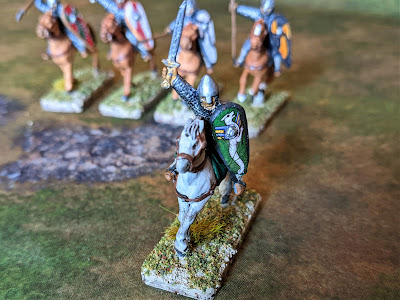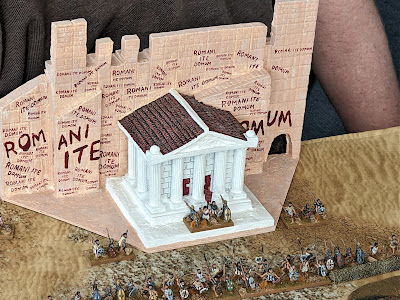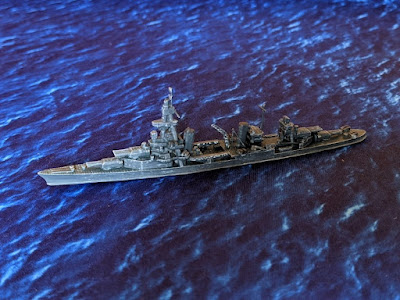I've been slow to update my blog for the past few months. I was able to do some hobby stuff in late October, but a recent setback in my cancer treatment kept me from doing much in November. I'm finally getting around to posting the photos of some troops I finished in late October. I was able to get out for a little while this weekend to see the NHMGS Game Day at the Museum of Flight.
First up the painted troops. After some diversions, I finally finished the mounted troops for my Sage Norman army (I talked about the foot troops in this post). The mounted troops took me a little longer than normal because I seem to have trouble getting my horse colors to turn out right. But here they are finally done.
 |
| Mounted Normans |
The figures are from the Gripping Beast Saga Norman starter box. Here are some close-ups of the leader and two hearthguard units. The shield transfers are from Little Big Men Studios.
 |
| Army leader |
 |
| The first hearthguard unit |
 |
| The second hearthguard |
That gives me a 5 point Saga army. I would like to add a banner and maybe some mounted javelins. But it will probably be a while before I get those. Here is a photo of the whole army.
 |
| Saga Norman army |
As I mentioned above, I had to slow down in early November due to some treatment setbacks. After a few weeks of resting up and working to get back on track I decided I could use a short outing. I took the opportunity to spend a little time at the Seattle Museum of Flight for their hobby day, which included the NHMGS game day. It is always fun to see gaming under the aircraft at the museum. Here are a few photos I took at the event.
 |
| Overview of the game and model areas |
 |
| Maybe some new recruits? |
 |
| Romans Go Home! |
 |
| All bunched up on the last lap |
And some other games ...
 |
| Northwest Indian Wars using the Brother vs. Brother rules |
There was another gaming period in the afternoon, but I was already gone by then.
It seemed like there were a lot of people stopping by to ask questions and take a look at the games. So I would say it was a successful event.
As always, thanks for looking in on my blog. Due to upcoming treatments, I don't expect to get up another post until the end of the year.





















































